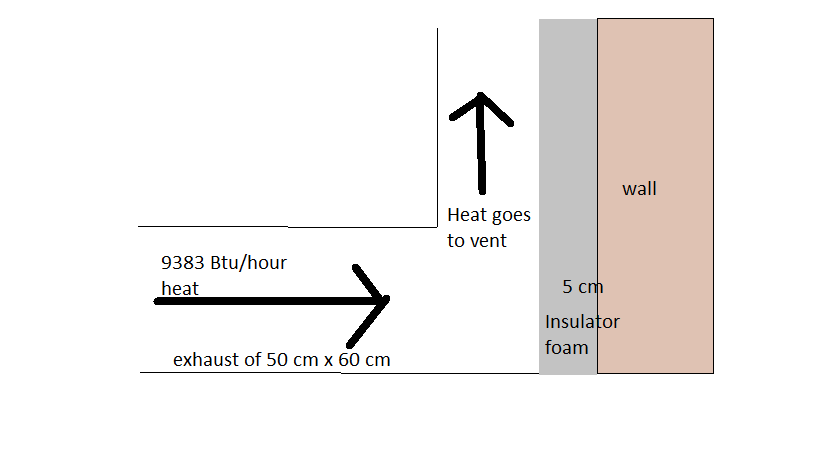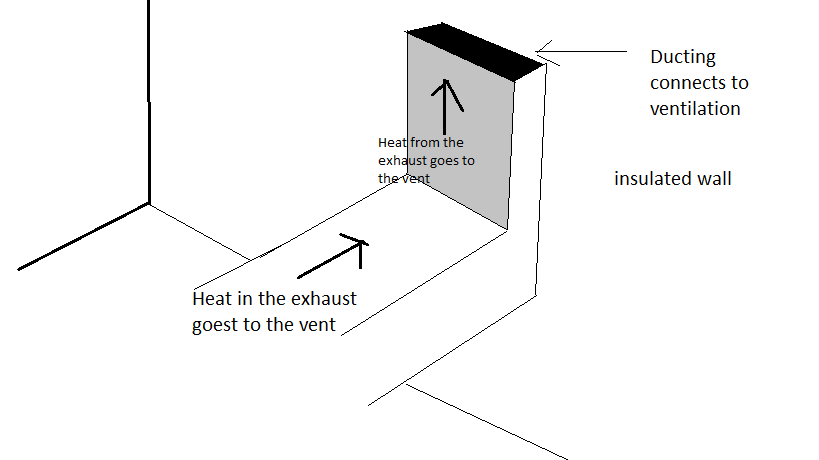 I have a machine that has power output of 2750 watt, which is blasted to a insulator foam with thermal resistance of 2.1 m2 kelvin/watt where the insulator is 5 cm thick and it drives the heat into ventilation and out of the roof.
I have a machine that has power output of 2750 watt, which is blasted to a insulator foam with thermal resistance of 2.1 m2 kelvin/watt where the insulator is 5 cm thick and it drives the heat into ventilation and out of the roof.
I want to make sure that the insulator can withstand the heat blast from the machine. So if I know that 2750 watt can output 9383 btu/hr where 1 watt outputs 3.412 btu/hr, how can I be sure that the insulator can withstand the heat without it getting spread out? regards
Edited additional info: exhaust temp is 40 degree Celsius, room temp is 25 degree Celsius, and outside temp is 32 degree Celsius.
Flammability limit: lower limit for hydrocarbon gas (part of the foam) 1.8% by volume upper limit for hydrocarbon gas: 8.5 % by volume flash point of hydrocarbon gas: -84 degree Celsius
Volume of the exhaust = 50x 60 x 200 cm cube = 600,000cm cube
